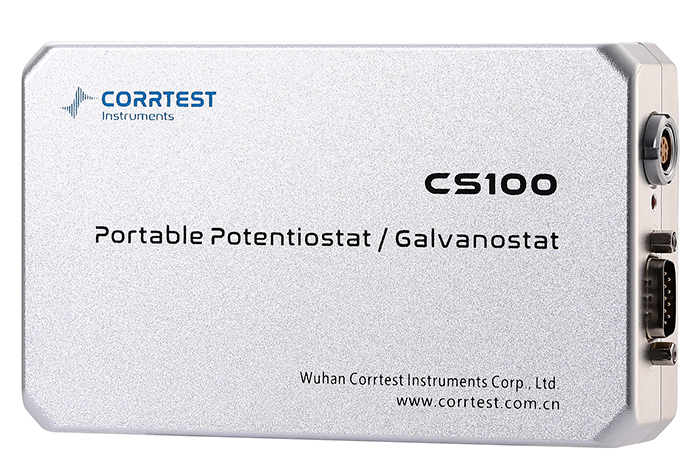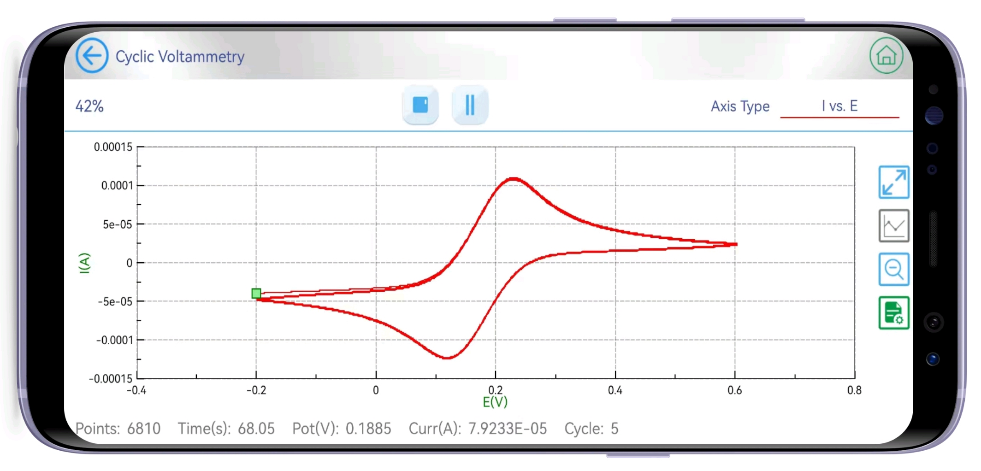Product Introduction

.png)
The CS100 is internally powered by a lithium battery, which can be placed in a glove box or used outdoors. The lithium battery can be charged in advance, and the Type-C interface is used for charging and communication. The circuit adopts a floating-ground design, and the electrochemical parameters of the grounding system can be measured without an isolation transformer.
CS100 portable potentiostat is mainly used for battery testing, electroanalytical chemistry, and corrosion electrochemical testing. The voltage control range is ±10V, compliance voltage is ±12V, the current output range is ±45mA, and the minimum current resolution can reach 100fA.
.png)
The small and convenient potentiostat can be used for performance testing of battery materials in the glove box;
Ultra-low detection limit of heavy metal ions, suitable for water quality testing in environmental protection;
High current accuracy, suitable for small current detection in biosensor;
Comprehensive functions, can be used for the active ingredients detection in food and drug field;
Easy to carry, suitable for bridge corrosion and soil corrosion measurements
Overview
The CS100 portable potentiostat is composed of DDS digital signal synthesizer, constant potential control, dual-channel high-speed 16bit/high-precision 24bit AD converter. The built-in DDS and dual-channel signal correlation integral circuit improves the measurement accuracy of AC impedance. CS100 potentiostat can also output sine wave, square wave, triangle wave, sawtooth wave, pulse wave, etc., and the output frequency is 0~100KHz.
The command control and data analysis of the CS100 portable potentiostat are realized through the CS Studio software. The software has multi-coordinate graphic display and zooming, data/graphic storage/printing, and interactive help. The software has techniques for materials and corrosion electrochemistry, including automatic or manual reverse sweep of passivation curve, electrochemical reactivation method, solution resistance (IR drop) measurement and compensation.
CS Studio software also has a complete data analysis function, which can achieve the volt-ampere curve smoothing, the peak height and area integration, and the electrochemical parameters analysis of the polarization curve, including polarization resistance Rp, Tafel slope ba, bc, and corrosion current density icorr, corrosion rate calculation, etc., noise resistance Rn and power spectrum can also be calculated, and the graph can be copied to other files in vector mode.
The CS100 portable can be controlled by either our desktop software or App.








 Contact Us
Contact Us +86 13469965984
+86 13469965984